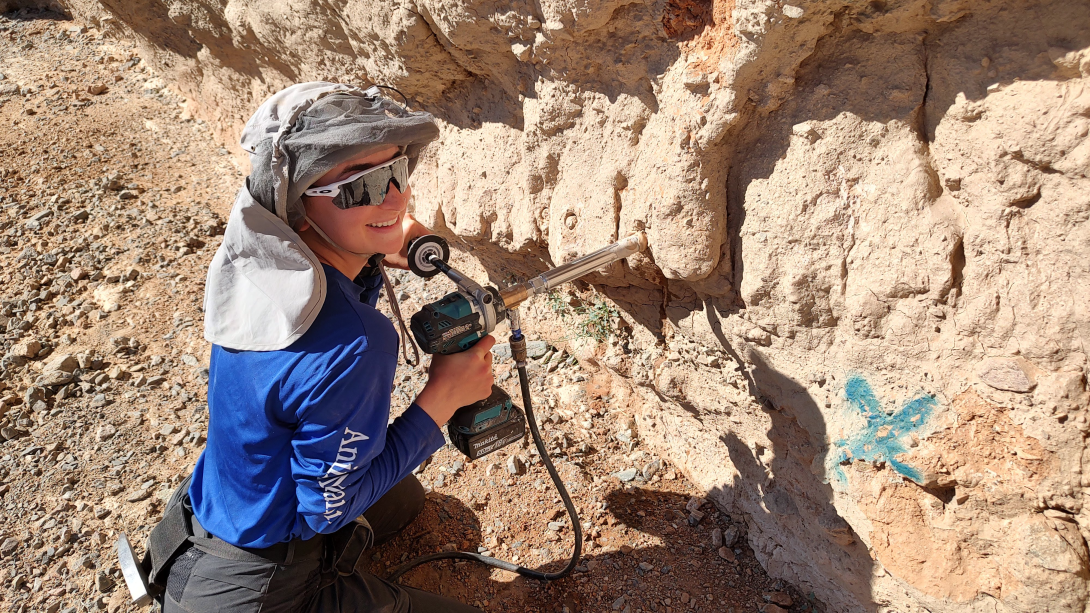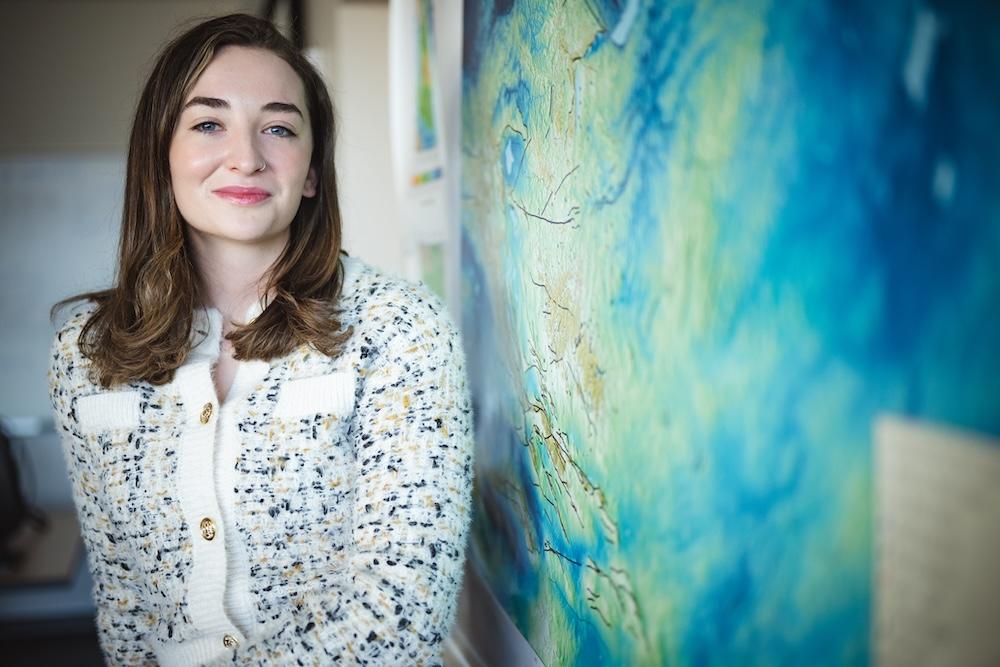Fieldwork Rocks
Aurora Bertoldo ‘25 conducts research in Mongolia and solidifies her passion for geology
Near the remote Altai Mountains of western Mongolia, Aurora Bertoldo had the experience of a lifetime. As the only undergraduate student working alongside scientists from Lehigh, Colorado State University, University of California, Irvine, and the Mongolian Institute of Astronomy and Geophysics, she was daunted at first. But her enthusiasm and expertise demonstrates a deep understanding for the research.
The collaborative team aims to “create an age model for this mountain range in Western Mongolia to determine the age and the rate of formation,” Bertoldo explains. “They're very high mountains and the height of them actually affect atmospheric circulation and atmospheric wind patterns.”
By studying the uplift of these mountains, researchers gain insights into the region’s climate history. The timescale will help the scientists determine when the mountains reached a height that began blocking precipitation from going over the peaks and creating arid conditions on one side. Bertoldo’s research, a smaller part of the larger project, focuses on the saline lake deposit near the shorelines of Khyargas Nuur, in the Great Lakes Depression.
Looking at the lacustrine deposit, or lake sentiment, for the first time was striking. “It’s very patterned alternations. It looks like perfect stripes,” she says. The beautiful layers of gray and white sediment contrast sharply with the red and dark brown rocks in and surrounding the Zereg Basin.
Frank Pazzaglia, professor of geology in the Department of Earth and Environmental Sciences and Bertoldo’s advisor, led the Lehigh research team. Upon seeing the lake deposit they wondered, how could the beds look like this? They knew it was driven by some sort of cyclical or periodic process. “We determined it could either be biological, astronomical, or tectonically related,” Bertoldo says.

To answer their question, Bertoldo took measurements at regular intervals to assess how readily the sediment magnetizes. “You can use the magnetic susceptibility of sediment as a proxy for the depositional environment and therefore the water depth of the lake as it expanded and contracted over time,” she explains. By analyzing the magnetic fluctuations, she can determine the natural process responsible for the distinct bedding.
“If it doesn't align with these astronomical cycles, specifically Milankovitch orbital cycles, then we can look at uplifted lake shorelines to see if it’s tectonically related,” she says. If the bedding samples aren’t astronomical or tectonically related, they can assume by process of elimination the patterns are related to the unsteady biological production of sediment.
An environmental science and anthropology double major, Bertoldo’s senior thesis will focus on the data she collected from the Altai Mountains.
Bertoldo is grateful that Lehigh and Pazzaglia’s immersive classes prepared her for such an experience. “I gained the skills to be able to approach scientific research…and being able to conduct certain field testing and procedures, it made the segue into a real field experience much easier.”
“The research [I] conducted this summer in Mongolia solidified my interest in geology. I think that was a crucial, pivotal moment in deciding this is something I want to do,” Bertoldo says, who plans to attend graduate school for geology.
“It was so enriching getting to work alongside and camp alongside our colleagues from the Mongolian Institute,” Bertoldo shares. They not only helped the team navigate the rugged landscape, but were gracious and welcoming. “I learned so much about the history of Mongolia, the culture, what daily life is like, and the beauty of the natural landscapes.”
“It was rewarding in every sense of the word,” she says.

